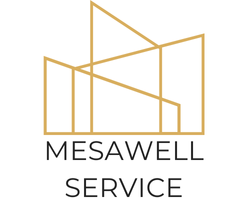Understanding the UK Market Landscape
When venturing into the UK market, it is crucial to conduct a thorough UK market analysis. This helps identify prevalent consumer trends and preferences. One significant factor is understanding local cultural nuances, which can significantly influence market research strategies and the reception of new products. Recognising cultural differences enables companies to tailor their offerings to meet specific local needs, thus enhancing customer satisfaction and loyalty.
The UK consumer market is characterised by a strong affinity for sustainable and ethically produced goods, a trend that continues to gain momentum. Consumers are increasingly conscious of environmental issues and are inclined towards brands that reflect these values. Therefore, businesses must factor in these trends when planning their product launch considerations.
Have you seen this : Ultimate guide to digital marketing success: effective strategies for elevating your manchester restaurant”s online presence
Beyond cultural aspects, there are specific regulatory considerations that must be adhered to before launching a product in the UK. The UK has stringent regulations concerning product safety, labelling, and advertising. For instance, compliance with the UK’s trading standards is mandatory to ensure that products meet legal requirements. Failing to align with these regulations can result in financial penalties and damage to brand reputation. As part of the UK market analysis, understanding these legal frameworks is essential for successful market entry and growth.
Identifying Your Target Audience
Understanding your target audience is crucial for effective marketing. Begin by conducting comprehensive target audience research. This involves gathering both demographic data, such as age, gender, income, and location, and psychographic data, which includes interests, behaviours, and values.
Also read : Key techniques for developing a high-impact byod policy in cardiff”s marketing firms
Creating buyer personas is an excellent way to synthesise this information. For the UK market, consider cultural factors and regional preferences. Buyer personas are fictional yet detailed profiles that embody your typical customer. They help tailor your messaging to meet specific needs and preferences. Think of them as your ultimate guide to understanding what matters most to your audience.
Utilise tools like Google Analytics, Facebook Insights, or dedicated platforms like HubSpot for gathering audience insights. These tools provide qualitative and quantitative data, allowing for effective customer segmentation—dividing your audience into distinct groups based on shared characteristics.
Such segmentation analysis enables more targeted marketing campaigns. It allows you to address particular pain points or desires of each segment, improving engagement and conversion. Accurate buyer personas and well-defined segments can significantly enhance marketing precision, ensuring resources are directed where they matter most. Keep these strategies in mind, and you’ll be well on your way to truly connecting with your potential customers.
Conducting Competitor Analysis
Performing a thorough competitor research is essential for understanding the competitive landscape. Identifying key competitors in the UK involves analysing market leaders and emerging players. Use industry reports, online databases, and news articles to pinpoint competitors within a specific niche. Furthermore, social media monitoring can reveal competitor activities and strategies, providing deeper insights.
To assess competitors’ performance, a SWOT analysis is invaluable. It allows businesses to evaluate their competitors’ strengths, weaknesses, opportunities, and threats. Begin by cataloguing the competitors’ strengths, such as their market share and brand reputation. Contrast this by identifying weaknesses like limited product range or poor customer service. Opportunities often present themselves in the form of untapped markets or technological advancements, while threats could include economic shifts or regulatory changes.
Tools and methodologies for competitive market positioning aid in assessing your business’s status compared to your competitors. Utilise analytics tools to measure market trends and consumer behaviour. Platforms like SEMrush and Ahrefs can help track competitors’ online presence and performance metrics. By incorporating these strategies and tools, businesses can better position themselves in the market, enhancing decision-making and strategic planning. Being informed and proactive allows you to develop competitive strategies that align with your business goals.
Data Collection Methods
In the expansive realm of collecting data, qualitative and quantitative research methods stand paramount. Each method unlocks a different dimension of understanding. Quantitative approaches, such as surveys, provide numerical insights. These offer concrete data that can help identify patterns. On the other hand, qualitative techniques, like focus groups, delve deeply into human experiences and motivations, revealing the underlying “why” behind numbers.
Designing effective surveys calls for thoughtful tailoring to the UK audience. Cultural nuances and language specificity are pivotal for achieving authentic responses. To capture the UK’s diverse voice, incorporate both close-ended and open-ended questions, allowing room for expression while ensuring statistical relevance.
Meanwhile, focus groups necessitate careful moderation and participant selection to yield productive discussions. Matching demographics with research goals guarantees rich, targeted insights.
Analyzing which data collection tools and platforms best suit your objectives can significantly enhance efficiency. Platforms like SurveyMonkey and Google Forms aid in streamlining survey processes, while Zoom or Microsoft Teams facilitate virtual focus groups, removing geographical constraints. Exploring and selecting the right mix of technological aids can drive both methods closer to a precision that aligns with the Stanford Question Answering Dataset (SQuAD) methodology.
Analysis Techniques for Market Research
Effectively analysing collected data is crucial for detecting market trends. Utilising a variety of data analysis methods can illuminate patterns and behaviours that guide sound business decisions. Among these methodologies, statistical analysis is instrumental in breaking down large datasets and discerning trends. It can filter noise and hone in on meaningful insights, which businesses can use to adjust strategies.
In practice, tools like SPSS and R are popular for conducting detailed statistical analyses. These tools offer sophisticated capabilities for processing intricate datasets, allowing analysts to gain deeper insights into consumer behavior and market dynamics.
Moreover, employing interpretation strategies such as segmentation analysis or regression models allows for better precision in understanding key variables impacting market trends.
Successful data interpretation is exemplified in many product launches. One notable case study involved a tech company utilizing big data analytics to forecast consumer demand, resulting in a product rollout that exceeded sales expectations.
The integration of sophisticated analytics tools into market research processes does not just illuminate current trends but provides a predictive lens through which businesses can anticipate and prepare for future changes, thereby establishing a strategic advantage.
Actionable Strategies for Effective Market Research
Market research is a critical component for any successful business strategy. To navigate the complexities of today’s markets, businesses must employ actionable market research and strategic planning. Here’s how:
Start by formulating a comprehensive market research plan. Define your objectives clearly. Are you exploring new market opportunities, assessing competitor dynamics, or understanding customer needs? Once clarified, select methodologies that best fit your goals, such as surveys, focus groups, or data analytics.
Next, embrace research best practices to implement findings into your business strategy effectively. Translate insights into clear action plans, setting measurable objectives to track progress. An adaptable approach ensures responsiveness to market changes. Encourage stakeholder collaboration to facilitate integration across departments.
Real-life examples emphasize the impact of strategic market research. Consider a global tech company that utilized survey feedback to refine its product features, leading to a successful product launch. They identified a gap in customer experience and quickly adapted, securing a competitive edge.
To succeed, leverage these actionable strategies and watch as they transform insights into strategic advantages that enhance your business’s growth trajectory. Remember, well-executed market research is not just a plan but a pathway to tangible outcomes.
Addressing Cultural Considerations
When venturing into the UK market, businesses must consider the cultural insights that underline consumer behavior. The UK’s rich tapestry of local preferences greatly affects purchasing decisions. For instance, understanding cultural differences, such as the British preference for understatement, can significantly impact how products are marketed. A strategic approach to align marketing strategies with these nuances ensures a stronger connection with the target audience.
Incorporating an awareness of cultural insights involves knowing not only who the consumers are but also what they value. This encompasses everything from communication styles to specific product features that align with local preferences. For instance, the UK’s emphasis on sustainability influences consumer choices, prompting businesses to highlight eco-friendly aspects in their promotions.
Real-world applications of these principles can be seen in various case studies. One such example is a food brand that adapted its flavors and packaging to suit British tastes, resulting in successful market penetration. Another case involved a technology product recalibrating its messaging to meet the local preferences for simplicity and efficiency, thereby enhancing its appeal.
Thus, acknowledging and adapting to cultural insights are vital steps for any business aiming to thrive within the diverse and dynamic UK market.
Regulatory Aspects of Market Research in the UK
Delving into the UK market regulations, it’s crucial to understand the legal landscape impacting market research and product launches. A significant regulation is the General Data Protection Regulation (GDPR), which governs data collection and usage. It mandates companies to ensure participants’ informed consent, implement strong data protection measures, and report any data breaches promptly. Non-compliance can result in substantial fines, highlighting the importance of adhering to these guidelines.
Further, ethical research practices are crucial. These involve obtaining explicit consent from participants, ensuring transparency in data use, and respecting confidentiality. Companies must align their research endeavors with UK standards to maintain trust and credibility among consumers. Apart from GDPR, other regulatory bodies like the Market Research Society (MRS) underscore ethical practices by outlining strict codes of conduct that professionals must follow.
For brands looking to thrive in the UK market, these regulations serve not only as legal obligations but as guidelines for maintaining research integrity and consumer trust. With a robust understanding of these regulatory frameworks, businesses can conduct market research that both complies with the law and respects participant rights, fostering an environment of trust and reliability.











